I'm not one to jump from productivity tool to tool to try and become 5% better. In fact I use very few such tools, preferring to keep things simple instead. However over the past few years I've collected a short list of extremely valuable tools that I think it's safe to say I cannot comfortably work without. I often recommend one or more of these to friends and colleagues, so I figured I'd write up the list here for future use.
My day job and my hobbies are very different, however I use most of these tools for both. My hardware consists of a Windows 7 laptop for work, a Windows 7 desktop for home (hobbies, games, and other non-work stuff), and an iPad & iPhone (used for work & play). I also carry a Windows Phone 7.5 for work use.
Some context: I spend my day customising Microsoft Dynamics CRM for clients, which requires very little code cutting. When it does, it is usually plain JavaScript. I also write significant volumes of documentation, in MS Word. Say what you like about Word, but it's synchronisation and multi-user editing with SharePoint is fantastic. I also blog, both at work and at home. I take lots of photos, mostly of my kid, and don't share most of them online.
I've used every one of these for at least a year, in most cases many years. Where possible I pay for services so they don't disappear on me.
FastMail
I distrust Google with my e-mail for various reasons, and I really dislike seeing ads next to my e-mail. FastMail (now owned by Opera) is my go-to for e-mail services. They give me multiple domain names with multiple aliases, a shared address book with my wife, and great IMAP support over any port I like (great for networks that specifically filter IMAP/SMTP). There's also alternate logins and two-factor authentication.
I am more than happy to pay the few bucks a month this costs me for what really is a premium e-mail service.
Tip: With a Family or Business account, you can share address books and files between users.
Evernote
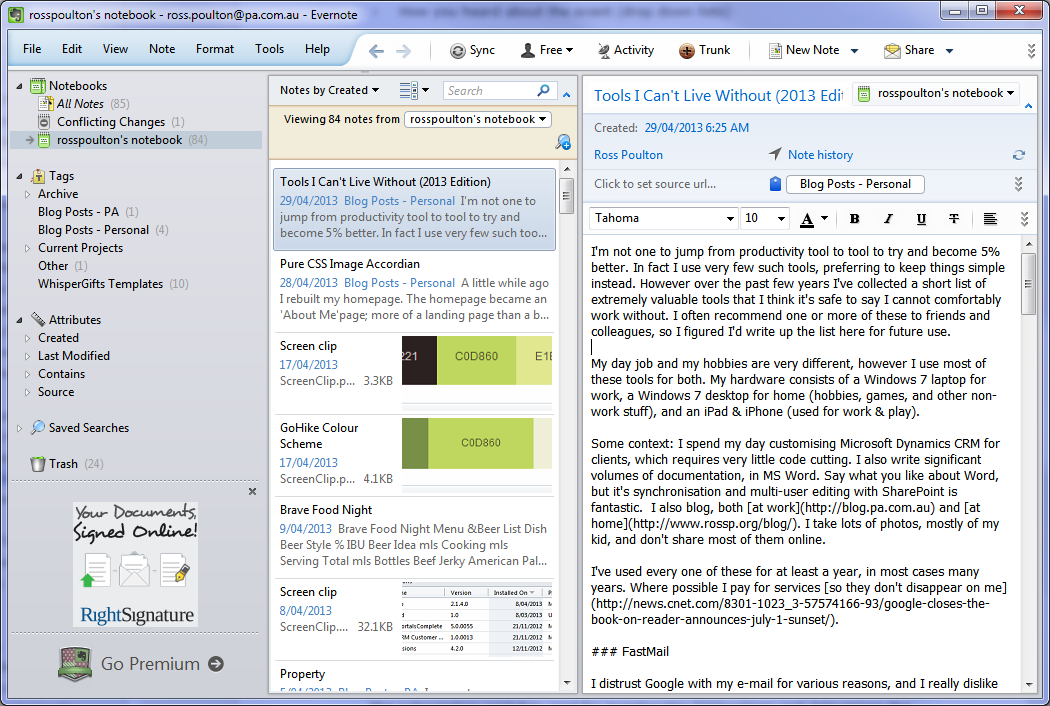
Evernote sucks as a text editor, but it's a great way to store snippets of text across multiple systems. I use it for note-taking in meetings, and I use it to write most of my blog posts (so that I can add to & edit on my iPad or work laptop).
The tagging & classification is really useful - I often find myself using Evernote to refer back to previous notes to make sure I haven't missed anything. My notes are kept in-sync between laptop, desktop, and iPad.
Tip: Create bullet lists but insert Checkboxes on each line instead. Your notes then instantly become a todo list that you can mark off. Evernote can also capture Win+S and save screenshots to a new Evernote note, or to your clipboard.
Sublime Text
Sublime Text is my go-to text editor in Windows. I use it for building HTML, writing JavaScript, and even editing long blocks of text. For a long time I used Vim32 on Windows, but it just doesn't seem right to me. It doesn't seem to work as fluidly as on a Linux machine, probably because of the lack of useful command line. (Yeah, yeah, PowerShell and Cygwin and such. Doesn't do it for me, sorry).
Tip: When you close ST, even with unsaved documents, your exact location is saved. When you reopen it, the unsaved buffers are shown. This means you can constantly have a scratchfile open that doesn't have to be saved, that maintains state through reboots. However, this also means that you close down ST sometimes without saving changes to disk, so the files you e-mail/upload aren't complete.
Vim
When I'm coding for fun, it's usually using Django on a Linux server. To edit this code I use Vim because it's what I know best. I have never been a huge fan of it on Windows, however, which is why I still use Sublime Text there.
Multiple buffers, good command-line support, syntax highlighting, and (for me) absurdly quick keyboard controls make this ugly duckling incredibly powerful and fast.
BackBlaze
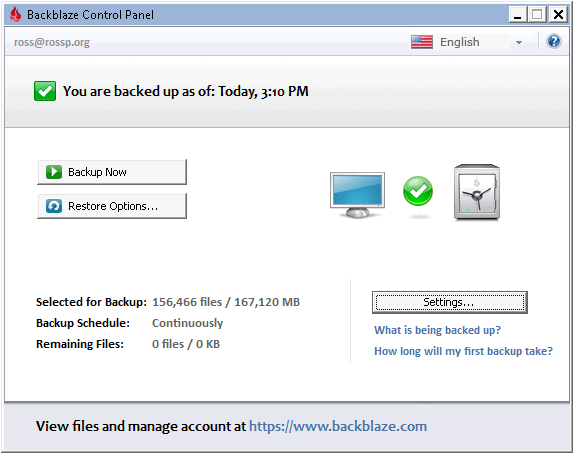
I've had a computer stolen before, and it isn't nice. If you don't have sufficient backups, then all of your documents, photos, and more are gone. Just like that. A fire is possibly worse, as it wipes out your CD-Rs and USB hard-drives that you "safely" stored in the wardrobe.
I pay BackBlaze fifty bucks a year to store all of my junk on their servers in the United States. Photos, documents, prior years tax receipts, and more. Whenever I add new photos to my PC from my DSLR, they're automatically backed up.
Tip: Make sure your photo folder(s) are included in the backup, as well as any external hard drives you use. Test the backup by downloading a significant chunk of it, so you understand the restore process before you need it.
Royal TS
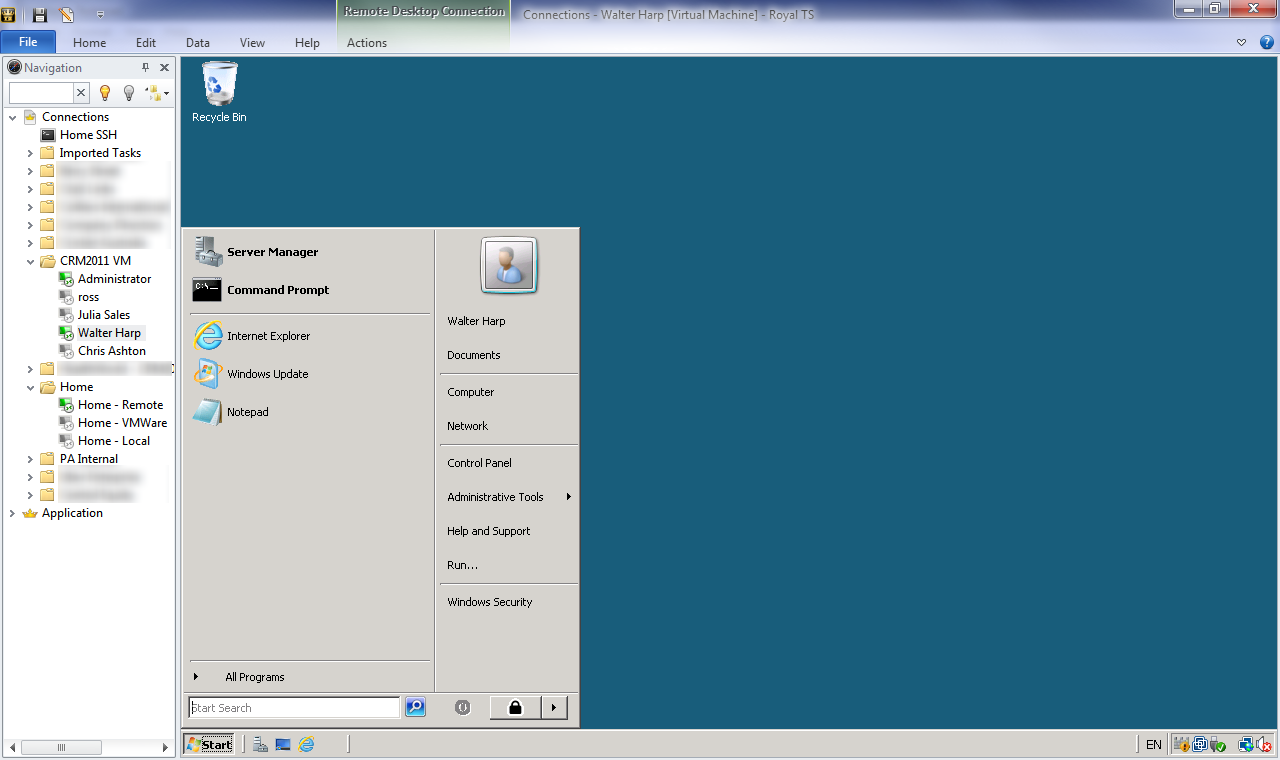
Royal TS is a great remote desktop tool that lets you save and connect to multiple RDP sessions at once within a single window. It's cheap. Apparently it's now available for OS X and iOS, however I only use it on Windows.
Tip: Group servers into Folders, and save login credentials (at least just Domain & Username) against the Folder. You then avoid storing login details against each server, making changes even quicker & easier.
PuTTY
The defacto SSH client on Windows - Using PuTTY with Pageant makes accessing Linux shells from Windows a piece of cake. It's also great for building secure tunnels through my home network when I'm on the road.
Tip: Put PuTTY in your $PATH and save your session details (eg which key to use, hostname, and window configuration). You can then run putty -load dev to login to your dev machine with pre-saved configuration.
Dropbox
It seems pretty common to use Dropbox for backups, however I don't use it for that - it's just a stupidly simple way for me to move files from one machine to another, or share online. Most commonly it'll be to move files between my work & home PCs; less regularly to move documents onto my iPad without using iTunes.
I only use a few hundred MB of storage so it's completely free. If you want to kick more storage space my way, you can use my Dropbox referral link (I get 250mb of storage if you signup this way, and it won't cost you any extra.)
1Password
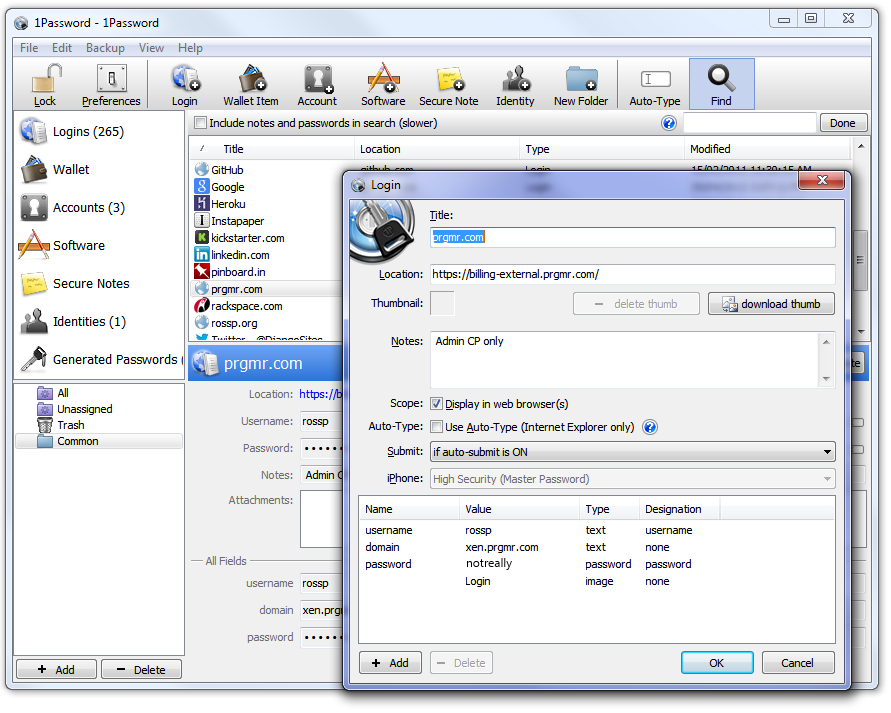
I can't put a price on 1Password. Here's how it works: When you sign up for some new website, 1Password generates a password for you. It'll be something like 1yf~f6dUBmw[rY. It then saves your passwords for you, so you don't need to remember 1yf~f6dUBmw[rY. When you then visit that website again, just press Ctrl-\ in your web browser and 1Password logs in for you with the right password! The whole password list is secured by a single strong password; you type that password each web browsing session (eg type it once the first time you press Ctrl-\, it remembers it for the next half-hour or so).
Since using it, a number of high profile sites I use have had security breaches but I've never been overly concerned as I know that my passwords are never re-used anywhere. I don't know what most of my passwords are, and I'm happy with that.
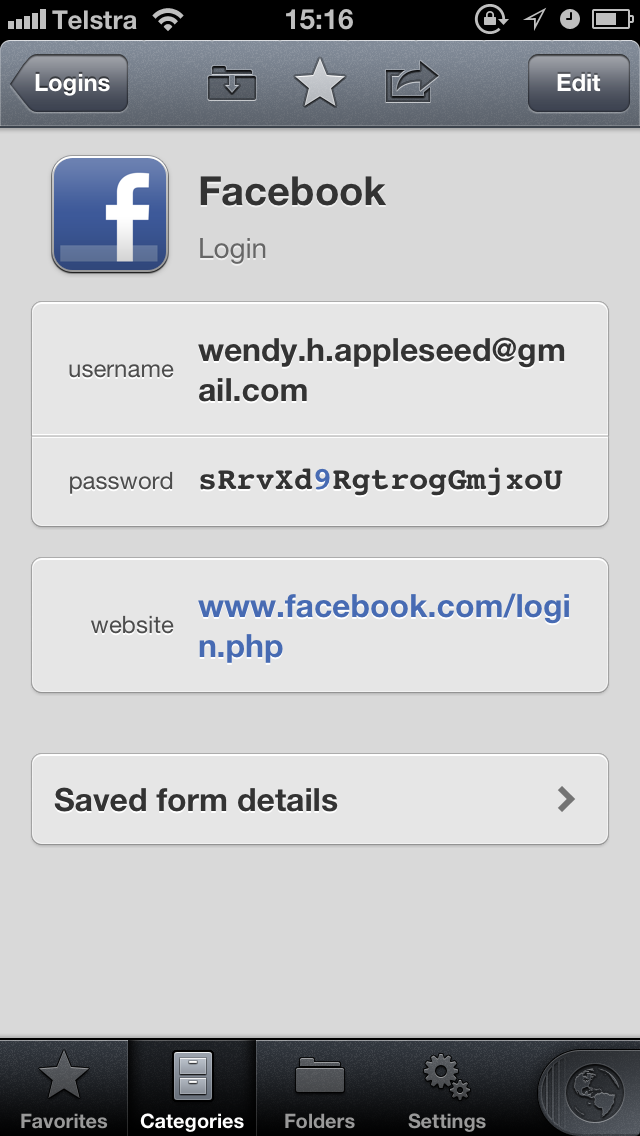
Tip: Sync across devices using Dropbox. Ensure you've got your Dropbox and primary e-mail passwords stored elsewhere, in case you find yourself with no access to 1Password or Dropbox. Use 1Password on iOS to copy passwords to your clipboard, to then paste into Safari or other iOS apps - retyping those long random passwords is a shit task, especially on a touch-screen.
Pocket Casts
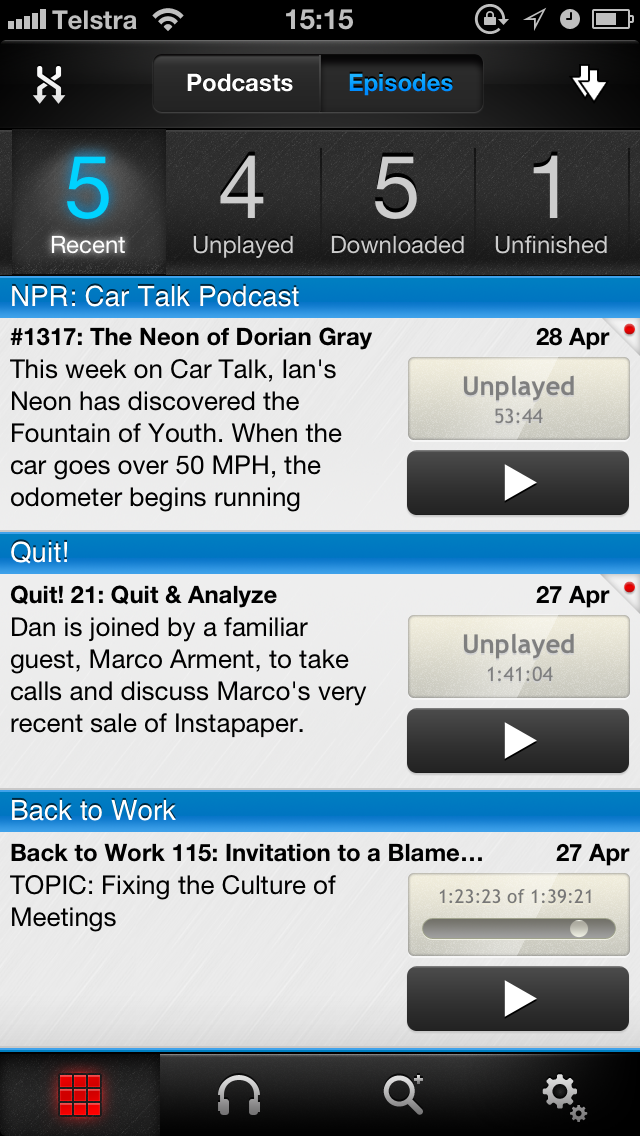
Pocket Casts is the only iOS Podcast client that I've found with push notifications. When new episodes come out, they pop up on my screen without me manually opening the app & refreshing the feeds.
I do wish that it had slightly better handling of 'show notes', but otherwise it's a great replacement for the buggy and incomplete Apple Podcasts app.
Spotify
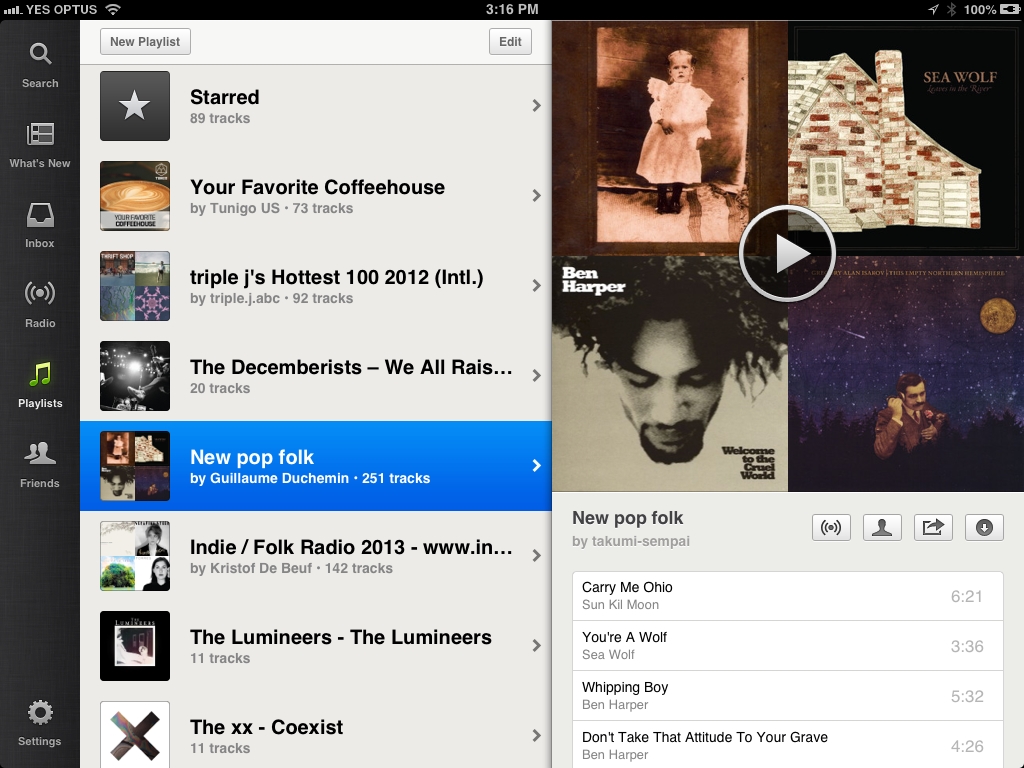
I use Spotify on my iPhone and iPad, almost always streamed over AirPlay to my Apple TV. For now I've given up on buying MP3s, and listen to random playlists when I want background music.
There's something fantastic about sitting on my back verandah, listening to any songs I could ever want to listen to (OK, except for The Beatles and AC/DC), without any cables or physical media.
Instapaper
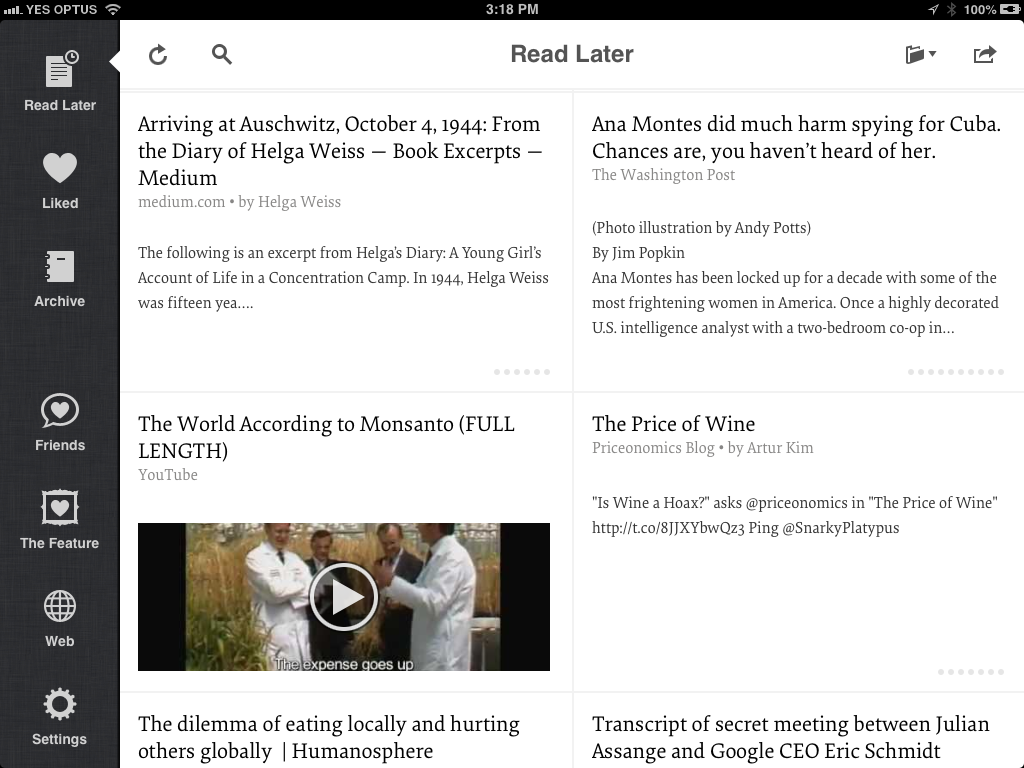
Instapaper has a simple premise: When you find something you want to read later, you click 'Read Later' in your browser. Then, when you've got time to read, you open the Instapaper app, where the article is formatted in a reader-friendly fashion. It even works off-line.
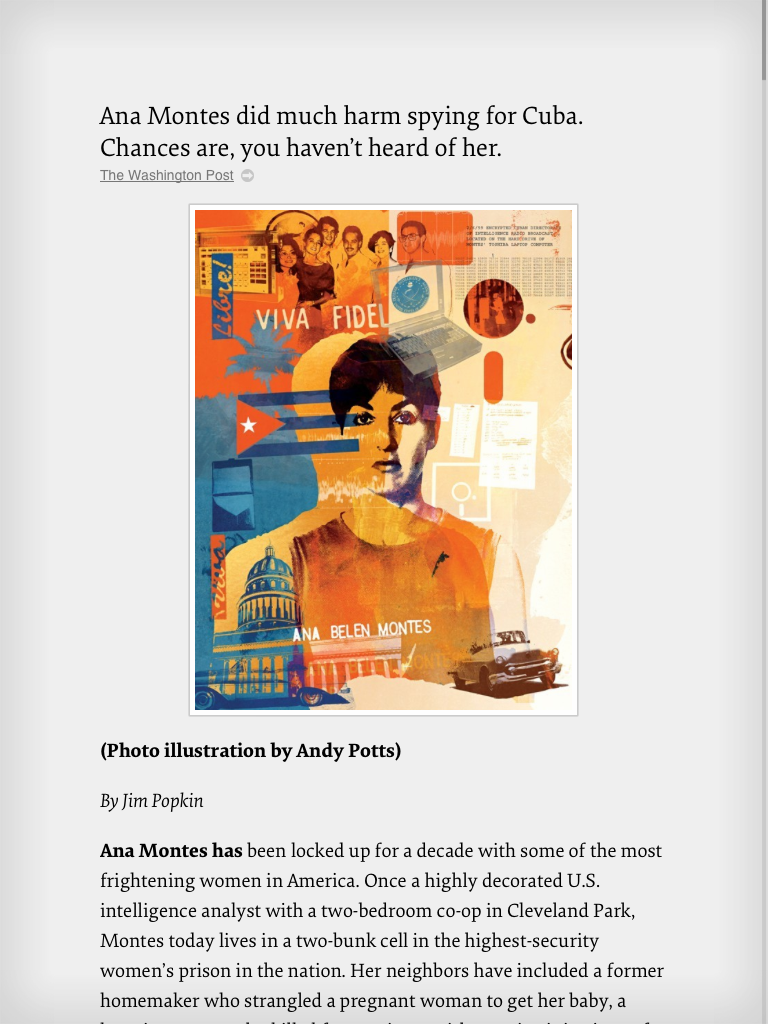
Instapaper is incredibly simple, and it works well. The basic service is free, and the iPad/iPhone apps cost a few bucks. It's initially hard to believe something so simple isn't free, but then you realise how useful it really is for those of us who like to consume long-form articles in our own time.
Tip: Don't forget to open Instapaper & sync it before getting on a plane. You've then got access to your reading backlog at 30,000 feet - images and all.
What else?
There are plenty of apps I use daily, but they're probably common enough to not need explanation. A few things you'll see me using if you watch long enough:
- Outlook - paired with Exchange, it's the killer corporate e-mail & calendar system.
- Google Chrome
- Adobe Lightroom
- Paint.NET
- WinSCP